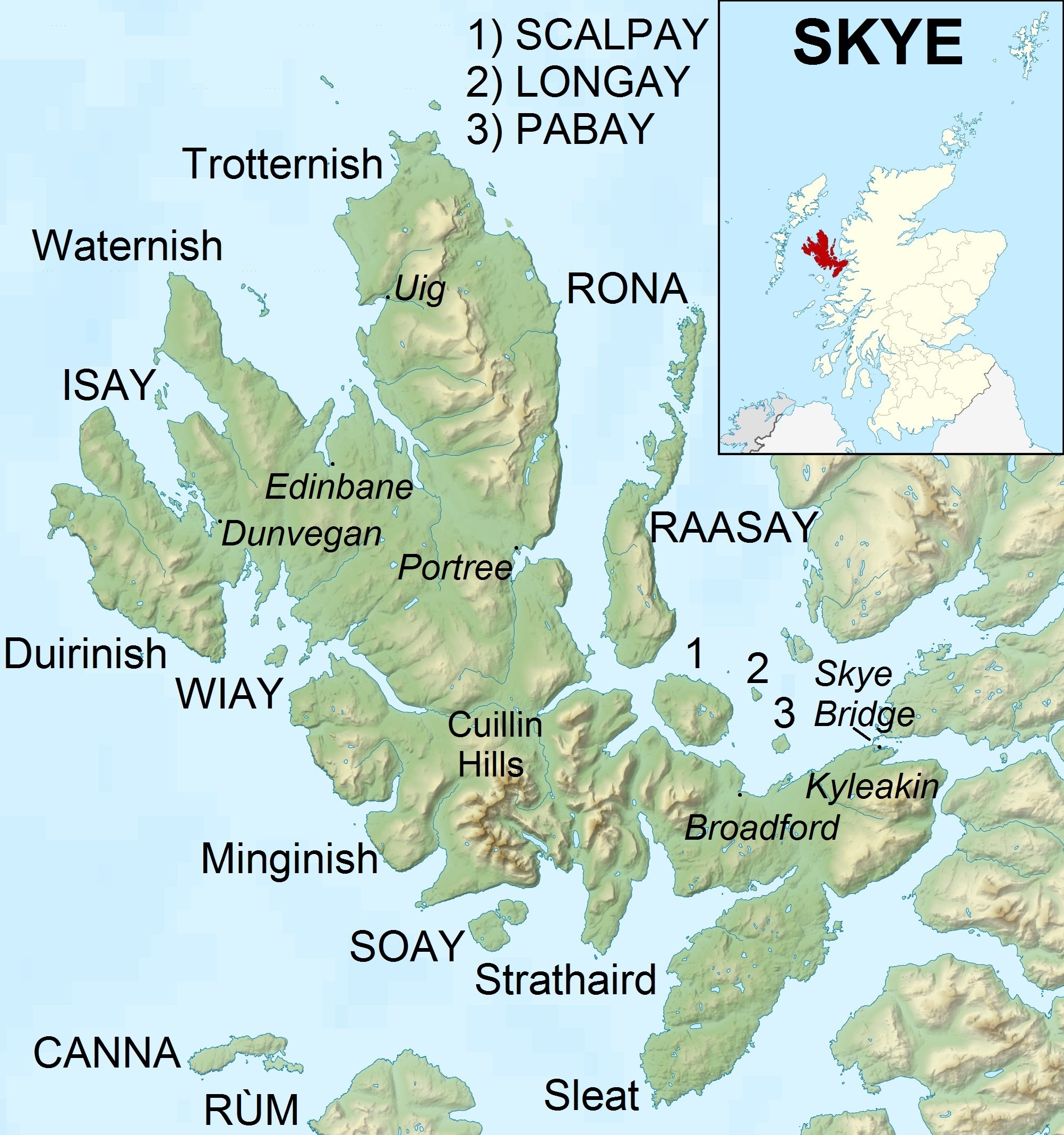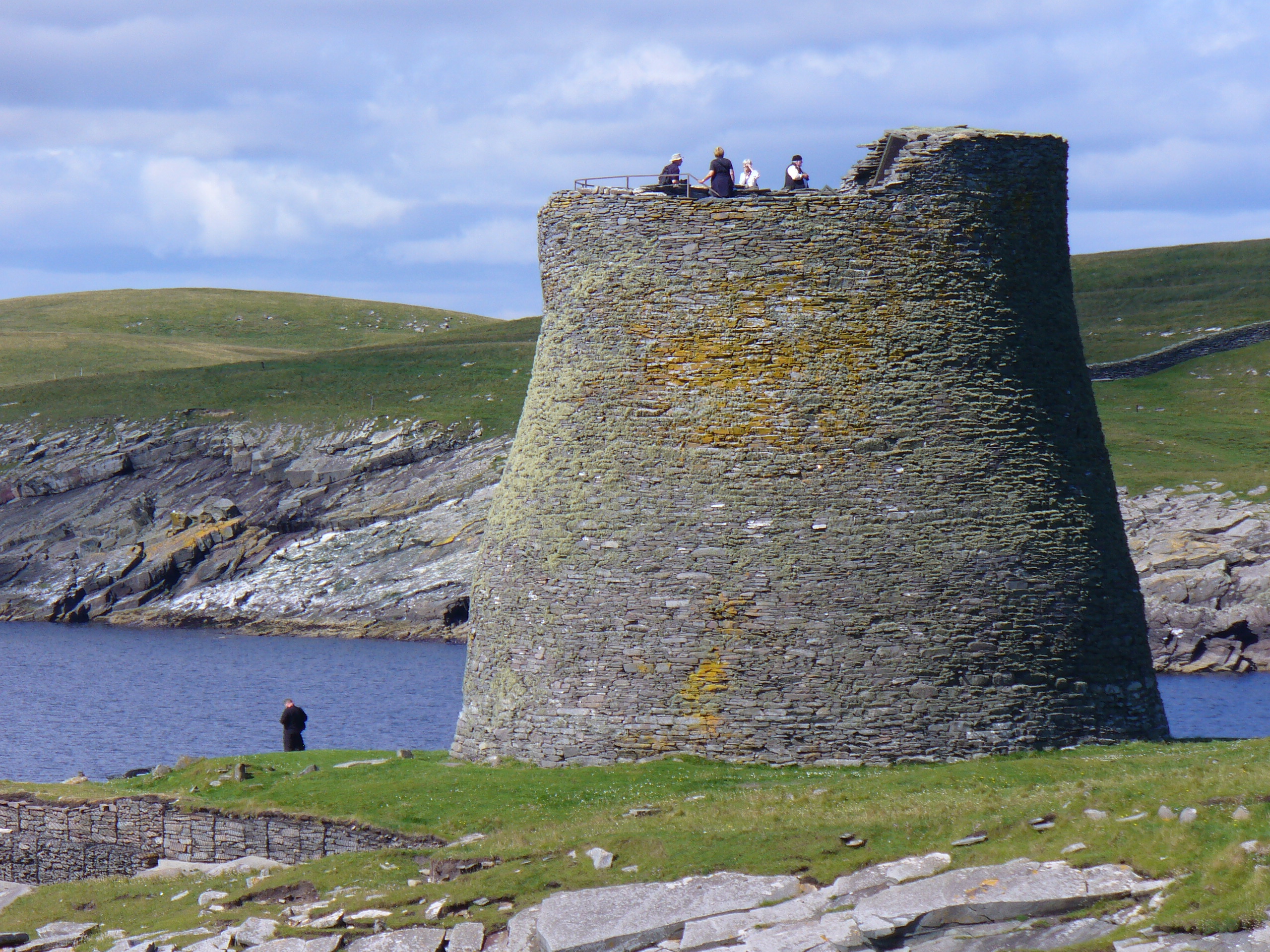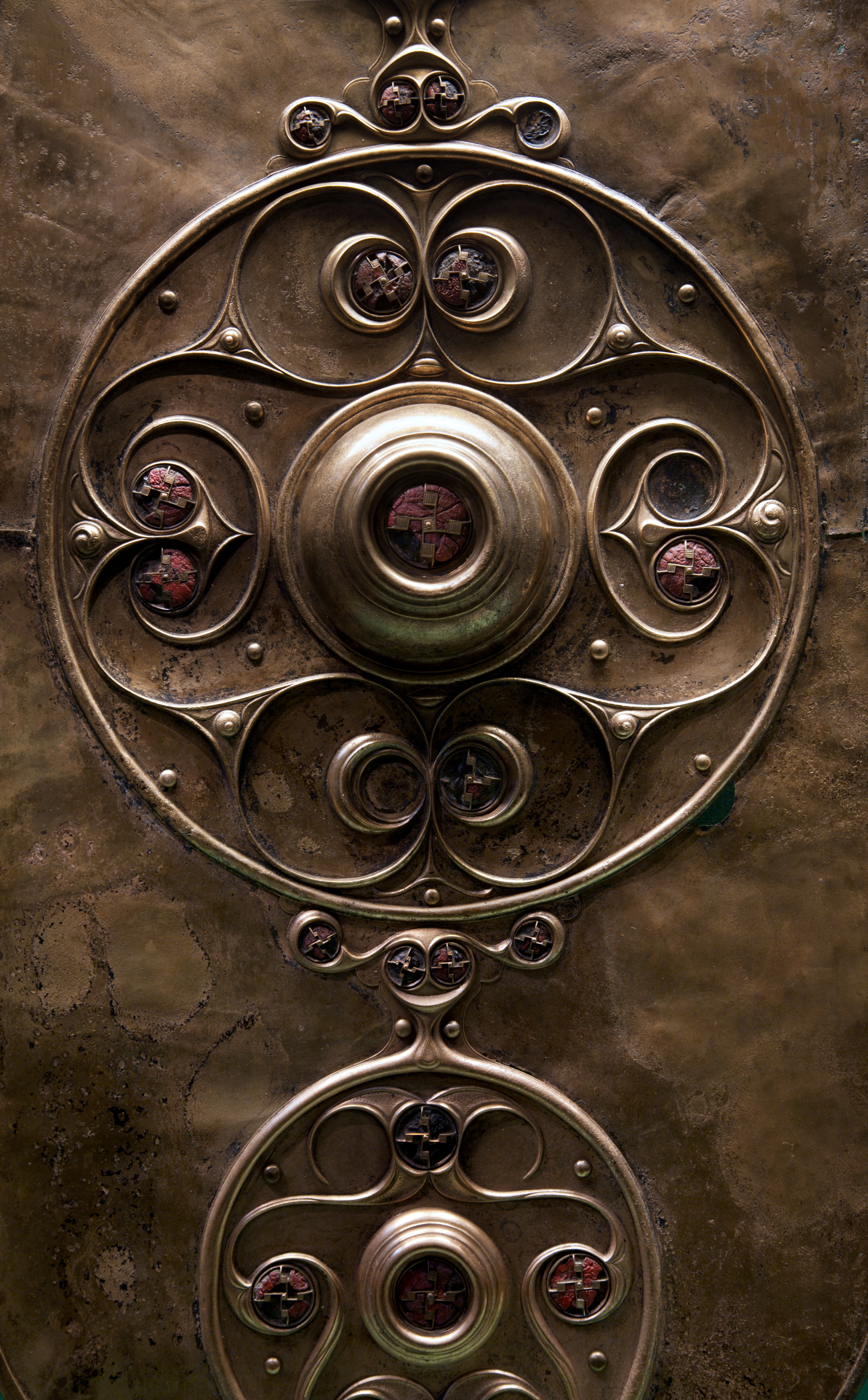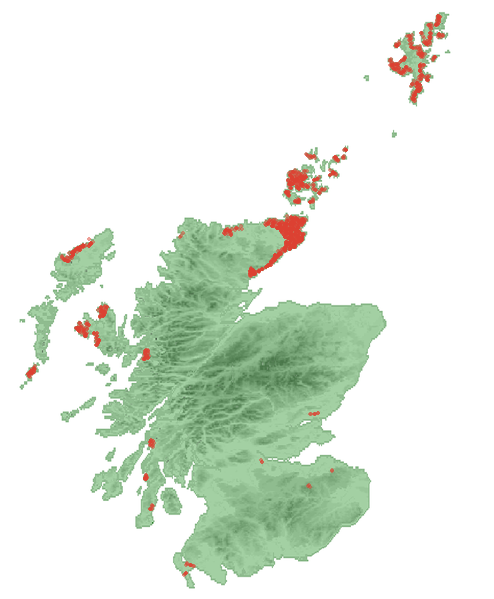|
Dun Borrafiach
Dun Borrafiach is an Iron Age broch located on the north coast of the island of Skye, in Scotland (). Location Dun Borrafiach is located on the Waternish peninsula of Skye The Isle of Skye, or simply Skye, is the largest and northernmost of the major islands in the Inner Hebrides of Scotland. The island's peninsulas radiate from a mountainous hub dominated by the Cuillin, the rocky slopes of which provide some o ..., about 8 kilometres northwest of the village of Lusta. It occupies a rocky outcrop overlooking the Borrafiach Burn. Description Dun Borrafiach has an external diameter of 16.5 metres, and the walls still stand to a height of 2.7 metres on the south side. The entrance is on the northwest side of the broch. The northeast side of the entrance-way appears to have been narrowed in antiquity by the insertion of additional walling. Inside the broch, a long stretch of the outer face of the intramural gallery is still visible on the east side. References External ... [...More Info...] [...Related Items...] OR: [Wikipedia] [Google] [Baidu] |
Skye
The Isle of Skye, or simply Skye, is the largest and northernmost of the major islands in the Inner Hebrides of Scotland. The island's peninsulas radiate from a mountainous hub dominated by the Cuillin, the rocky slopes of which provide some of the most dramatic mountain scenery in the country. Slesser (1981) p. 19. Although has been suggested to describe a winged shape, no definitive agreement exists as to the name's origin."Gaelic Culture" . VisitScotland. Retrieved 5 January 2013. The island has been occupied since the period, and over its history has been occupied at various times by Celtic tribes includ ... [...More Info...] [...Related Items...] OR: [Wikipedia] [Google] [Baidu] |
Broch
In archaeology, a broch is an British Iron Age, Iron Age drystone hollow-walled structure found in Scotland. Brochs belong to the classification "complex Atlantic roundhouse" devised by Scottish archaeologists in the 1980s. Brochs are roundhouse buildings found throughout Atlantic Scotland. The word broch is derived from the Scots language, Lowland Scots 'brough', meaning fort. In the mid-19th century, Scottish antiquaries called brochs 'burgs', after Old Norse borg, with the same meaning. Brochs are often referred to as Dun (fortification), dùns in the west, and they are the most spectacular of a complex class of buildings found in northern Scotland. There are approximately 571 candidate broch sites throughout the country, according to the Royal Commission on the Ancient and Historical Monuments of Scotland. The origin of brochs is still subject to ongoing research. While most archaeologists believed 80 years ago that brochs were built by immigrants, there is now little do ... [...More Info...] [...Related Items...] OR: [Wikipedia] [Google] [Baidu] |
British Iron Age
The British Iron Age is a conventional name used in the archaeology of Great Britain, referring to the prehistoric and protohistoric phases of the Iron Age culture of the main island and the smaller islands, typically excluding prehistoric Ireland, which had an Iron Age Ireland, independent Iron Age culture of its own. The Iron Age is not an archaeological horizon of common artefacts but is rather a locally-diverse cultural phase. The British Iron Age followed the Bronze Age Britain, British Bronze Age and lasted in theory from the first significant use of iron for tools and weapons in Britain to the Romano-British culture, Romanisation of the southern half of the island. The Romanised culture is termed Roman Britain and is considered to supplant the British Iron Age. The tribes living in Britain during this time are often popularly considered to be part of a broadly-Celts, Celtic culture, but in recent years, that has been disputed. At a minimum, "Celtic" is a linguistic ter ... [...More Info...] [...Related Items...] OR: [Wikipedia] [Google] [Baidu] |
Broch
In archaeology, a broch is an British Iron Age, Iron Age drystone hollow-walled structure found in Scotland. Brochs belong to the classification "complex Atlantic roundhouse" devised by Scottish archaeologists in the 1980s. Brochs are roundhouse buildings found throughout Atlantic Scotland. The word broch is derived from the Scots language, Lowland Scots 'brough', meaning fort. In the mid-19th century, Scottish antiquaries called brochs 'burgs', after Old Norse borg, with the same meaning. Brochs are often referred to as Dun (fortification), dùns in the west, and they are the most spectacular of a complex class of buildings found in northern Scotland. There are approximately 571 candidate broch sites throughout the country, according to the Royal Commission on the Ancient and Historical Monuments of Scotland. The origin of brochs is still subject to ongoing research. While most archaeologists believed 80 years ago that brochs were built by immigrants, there is now little do ... [...More Info...] [...Related Items...] OR: [Wikipedia] [Google] [Baidu] |
Waternish
Waternish or Vaternish () is a peninsula approximately long on the island of Skye, Scotland, situated between Loch Dunvegan and Loch Snizort in the northwest of the island, originally inhabited and owned by Clan MacNeacail/MacNicol/Nicolsons and originally consisting of small crofting communities. The history of the peninsula is a long (and often bloody) one involving clan feuds, massacres, de-population during the Highland Clearances, and eventual re-vitalisation. The Clan MacLeod clan seat is at the nearby Dunvegan Castle Dunvegan Castle (Caisteal Dhùn Bheagain) is located to the north of Dunvegan on the Isle of Skye, off the west coast of Scotland. It is the seat of the MacLeod of MacLeod, chief of the Clan MacLeod. Probably a fortified site from the earlie .... The current clan chief is Hugh MacLeod of MacLeod. It contains the hamlets of Stein, Skye, Stein and Lusta in Loch Bay to the south east, Halistra, Hallin,_Isle_of_Skye, Hallin and Trumpan further north an ... [...More Info...] [...Related Items...] OR: [Wikipedia] [Google] [Baidu] |
Brochs In The Isle Of Skye
In archaeology, a broch is an Iron Age drystone hollow-walled structure found in Scotland. Brochs belong to the classification "complex Atlantic roundhouse" devised by Scottish archaeologists in the 1980s. Brochs are roundhouse buildings found throughout Atlantic Scotland. The word broch is derived from the Lowland Scots 'brough', meaning fort. In the mid-19th century, Scottish antiquaries called brochs 'burgs', after Old Norse borg, with the same meaning. Brochs are often referred to as dùns in the west, and they are the most spectacular of a complex class of buildings found in northern Scotland. There are approximately 571 candidate broch sites throughout the country, according to the Royal Commission on the Ancient and Historical Monuments of Scotland. The origin of brochs is still subject to ongoing research. While most archaeologists believed 80 years ago that brochs were built by immigrants, there is now little doubt that the hollow-walled broch tower was an inventi ... [...More Info...] [...Related Items...] OR: [Wikipedia] [Google] [Baidu] |





